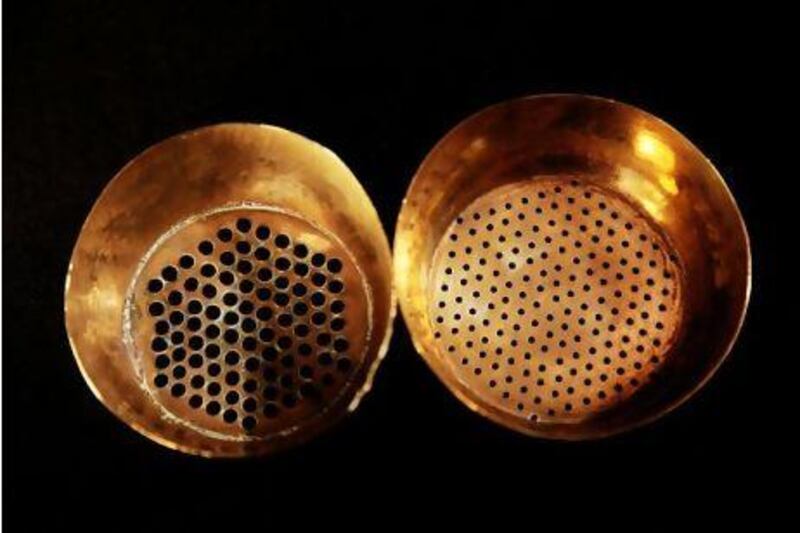Gulf pearls have a language of their own. For them to reach the right price at market, it was first necessary to grade them both by size and quality.
The most precious pearls were al jeyoon, free of blemishes, almost pure white in colour and perfect spheres.
Al yakkah pearls were of slightly lower quality, followed by al nameh, al qawlah, al badlah and finally al khashrah, the least valuable.
Video: 12. Pearl sieves - early 20th Century
These brass sieves were used by merchants to sort different grades of pearls when pearl diving was the main occupation in the UAE.
--------------------------
In addition to colour and shape, pearls were ordered by universally agreed sizes. These brass sieves, from Abu Dhabi, would have been an essential tool used by local merchants to sort the catch for resale. Al daneh were the largest and most valuable, with five more grades down to the tiny al bookah, little larger than a grain of sand.
"Big pearls were a fantastic find and everybody would be celebrating," says Frauke Heard-Bey, the Gulf historian who collected the sieves, "but most of them were small.
"So in order to assess what the value of a handful or bagful of pearls would be, they had to be graded. So you had gradients of holes in the sieves. The first one would retain only the big pearls.
"Next one retains the smaller ones and so on. Then one gets what are called seed pearls and these were often just used for clothes."
Pearls underpinned the fortunes of Gulf nations until the 1930s. A lethal combination of the Great Depression of the 1930s and the arrival of much cheaper Japanese cultivated pearls laid waste to the industry, and it had all but disappeared by the 1950s.
It was only the discovery of oil in Abu Dhabi in 1958 that brought prosperity back to the emirate.
Heard-Bey compares the boom years of the age of pearling to the impact of oil on the city in the 1970s. "Every year things were better. Every year the family had more because usually more boats went out and more pearls were sold, also for a higher price.
"Pearls were like symbols of the magic of the East and the idea of this magic swept all of Europe and eventually America."










